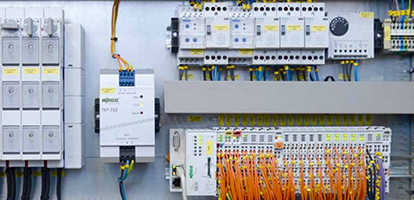


Mathias Wambsganß is Professor of Lighting Design and Building Technology at the Rosenheim University of Applied Sciences, sits on the board of the German Lighting Technology Association (LiTG) and is a founding partner of 3lpi, a lighting design studio in Munich. For the past 15 years, he has been involved in energy monitoring under the auspices of the Federal Ministry of Economy, where he carves up buildings into “energy slices”. In the interview, Wambsganß talks about the use of carelessly selected lighting systems, missed savings potentials, and the absolute necessity of placing humans at the center of any design.
Lighting today is supposed to be as efficient as possible. At the same time, users want convenience. Can these work together?
There is absolutely no contradiction, not initially, since highly efficient lighting means are now available. There is, thus, no need to optimize a lighting system based solely on its energy consumption. In addition, energy consumption, and its associated costs, should always be considered in relation to other cost factors. Personnel costs, for example, are a much larger line item in the corporate budget. Lighting an office costs, in the worst case scenario of low availability of natural light and long operating times, 8 to 10 euros per square meter per year. As a comparison, employers pay 5,000 euros and more per employee over the same time period measured according to the same space. Considered this way, we must absolutely stop measuring lighting solutions based primarily on their energy characteristics, and start placing more emphasis on lighting quality. Because ultimately, lighting exerts an enormous influence on the well-being of colleagues, and thus on their output.
If the quality of the lighting is not used as the basis for designing a conventional lighting system for a commercial building, what is?
There are standards for lighting a work place, which codify certain minimum levels, for example, 500 lux in an office. Many regard meeting these illumination levels as equivalent to lighting quality. However, lighting illuminance cannot actually be seen. It describes the amount of light which strikes a surface. The effect on the human eye, however, depends on the surface material. In addition, this standard assumes an employee who is 20 years old. Someone who is 50, on the other hand, requires fifty percent more light to be able to perform visual tasks at the same level of quality. Therefore, I begin with the question as to whether “500 lux” is the correct design goal at all. In consideration of productivity and the influences on health, it has become quite clear that we need more light for tasks at certain times. In an expert forum at the LiTG, we are currently discussing whether this standard is sustainable in its current form over the long term. In this case, defining a bandwidth of, for example, 500 to 1,000 lux would probably be a better solution.
But the Energy Saving Ordinance also includes specifications. Will your desire for “more light” potentially conflict with efficiency goals?
To a certain but small extent, yes. However, you have to look at the total relationship and consider things from a different point of view. For example, the installed output versus what is actually used, since the energy balance sheet ultimately counts that which was actually consumed. In order to arrive at a good result, a two-fold process makes more sense in my opinion: first, we should ask which lighting conditions are most useful in the work situation. The significance of the person who will work at this position plays an important role. Then, we undertake the necessary measures to configure the most efficient lighting solution. In addition to selecting efficient products, questions should also be raised about controlling or regulating the light. Although it has been documented that installing somewhat more lighting output makes financial sense, the savings potential of a lighting management system are even greater.
The basis for selecting a specific lighting system are becoming less cost-based. Instead, the guidelines issued by the legislature are granted more weight, and they have stated that the question involves employee health and productivity.
The key phrase here is “the right light at the right time”, which certainly relates to the quantity of light, and, where it makes sense, to the spectrum used. This means that the type and means for controlling light must be developed further so that the “right” illumination gains greater significance along with efficiency.
How should this look in your opinion?
If you consider how sensitively and directly our eyes react, then it is actually quite difficult to control or regulate lighting. In my opinion, this has yet to be sufficiently described. Therefore, we need information as to how to best bring the technical specifications into harmony with the ergonomics of the human eye. An example: if an office is equipped with daylight-dependent lighting control, then the brightness should not begin at 100% and then drop to the set point. The user has the feeling that it is too dark, because the human eye adjusts quickly to higher light levels, but takes longer to adapt to reduced light. The message to the user is inevitably that he or she could have more light, but is not getting it. In order to set such points correctly in the controller, the programmer needs to know what the suitable values are for each function, and which system characteristics are expected by the user upon start up.
Is the current procedure for the acceptance of lighting systems thus not mature enough because the electrical engineers do not know enough about the specifics of visual ergonomics?
To a certain extent, yes. Many experts are not sensitive to this. In general, they don’t know how the eye functions, and thus cannot adequately consider the relevant factors during operation or acceptance. From this, we should derive that it is actually logical to work toward a better method for operation and acceptance of lighting systems. This does not have to be a standard established by the legislature. It could, for example, also be based on information from the manufacturers of lighting controllers regarding how a system with their components functions most ergonomically in specific applications. The knowledge that we already have only helps the operator if someone has used the information to derive ways to improve things. That is, we need a recommendation for best practices.
Do you assume then, that your stated claim of promoting lighting quality through good lighting control will have any influence on available sensors?
That could become necessary, since the currently available sensors generally only measure brightness in addition to presence. If you look at a current, common topic, “Lighting and Health”, then sensors are necessary for evaluating the light received by the non-visual function of the eye, or to measure the spectral composition of the light. Prof. Herbert Plischke, endowed chair for “Lighting and Health” at the University of Munich, is currently experimenting with sensors which should contribute to this. However, I assume that it will take applications on a large scale before such sensors are affordable.
Do you believe that a system which functions well differs, from an investment standpoint, from a system that does not operate as well? The use of technology is often quite similar...
There is certainly no difference from the hardware side. I have seen lighting solutions with expensive hardware that did not function, or only had limited functionality. Hardware can obviously be a source of errors, for example, if a sensor was selected with features that don’t fit the installation location. However, if I assume that designers sought the correct components, then the question becomes whether a greater expense is incurred during commissioning if it is carried out properly, that is, if it was correctly dimensioned and parameterized. In which case, I believe yes. However, I am also of the opinion that this expense should be paid. If the challenges on the part of the design are suitably documented, then they should not be put down as a type of “extra” costs by the building owners.
Can you count on savings during operation if the commissioning has been carefully carried out?
Not necessarily. However, you will spare yourself aggravation on the part of your users, and that is almost priceless. If a carelessly commissioned system leads later to control which is virtually inoperable, then there are naturally increased operating costs in this case. The potential savings are lost.
Imagine that you were the operator and get to decide which system should be installed. Do you see an advantage if your own personnel were in a position of replacing defective components or adapting the system when the spaces are restructured?
Aren’t a lot of systems virtually proprietary, because they bear the earmarks of the programmer? Even when selecting an open-source system, a certain relationship of dependency is generated during commissioning... Against this background, what you are describing seems almost like a dream. It would have to be function like this: in case I convert the space, I could assign the lights and switches with my own personnel and wouldn’t need a highly-trained programmer who costs a lot of money. As an operator, I would certainly not be happy with a forced marriage to my system programmer.